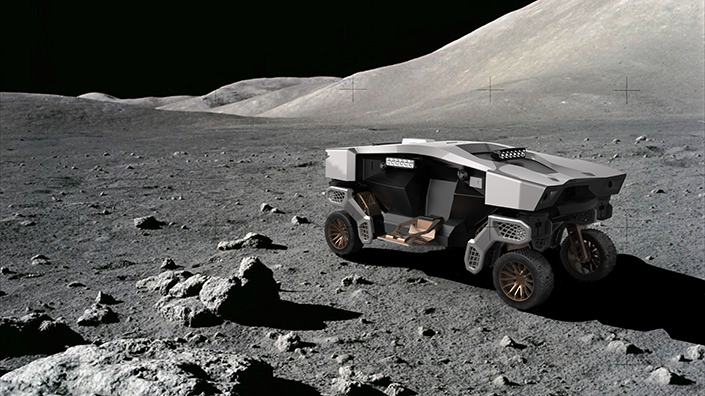Engineering news
Designed to carry deliveries, aid packages or scientific equipment, the uncrewed Transforming Intelligent Ground Excursion Robot (Tiger) is being developed by Hyundai Motor Group in California.
“Vehicles like Tiger, and the technologies underpinning it, give us an opportunity to push our imaginations,” said Dr John Suh, head of the company’s New Horizons Studio. “We are constantly looking at ways to rethink vehicle design and development and redefine the future of transportation and mobility.”
The vehicle is designed to function as a mobile scientific exploration platform in ‘extreme’ locations. Based on a modular platform architecture, it will include a leg and wheel locomotion system, 360º directional control, and a range of sensors for remote observation. It is intended to connect to unmanned aerial vehicles (UAVs), which could fully charge and deliver Tiger to inaccessible locations.
![TIGER Concept in Cave[2] TIGER Concept in Cave[2]](https://imechewebresources.blob.core.windows.net/imeche-web-content/images/default-source/default-album/tiger-concept-in-cave-2.jpg?sfvrsn=70d09912_0)
A large load bay housed within its body means it could carry goods for delivery, or deliver aid packages in emergency situations. Leg-wheel articulation would help the vehicle keep payloads level while tackling uneven terrain.
The Tiger would be most efficient with its legs retracted, moving by rolling traction. When it gets stuck or needs to travel over terrain that is difficult or impassable for wheels alone, it could use its walking ability to get unstuck or travel over that area.
The combination of leg and wheel locomotion was also seen in Elevate, a previous UMV concept from Hyundai Motor Group. Unlike Tiger, the Elevate was designed to carry passengers.
Developers worked closely with engineering design software firm Autodesk to develop the concept, using generative design to find the perfect balance of low weight and high strength. The legs and parts of the chassis are designed to be manufactured using carbon fibre composite additive printing.
The New Horizons Studio also worked with external concept design experts Sundberg-Ferar, exploring capabilities such as travelling across the Moon or other planets.

“While developing Tiger with New Horizons Studio the team at Sundberg-Ferar was looking to create a robot that maximised the efficiency of wheeled motion with the articulation of a quadruped to expand the possibility of reaching more remote locations,” said David Byron, manager of design and innovation strategy at Sundberg-Ferar. “Tiger is a modular platform design allowing different bodies to be attached to the chassis for unique applications, such as cargo delivery or surveillance in locations not suitable for humans.”
Click here to see a video of the concept.
Want the best engineering stories delivered straight to your inbox? The Professional Engineering newsletter gives you vital updates on the most cutting-edge engineering and exciting new job opportunities. To sign up, click here.
Content published by Professional Engineering does not necessarily represent the views of the Institution of Mechanical Engineers.